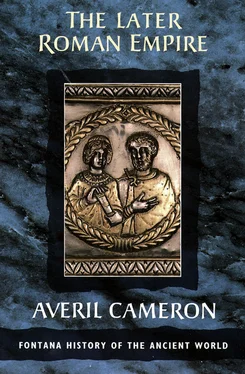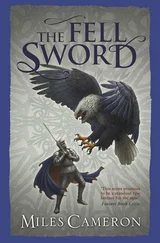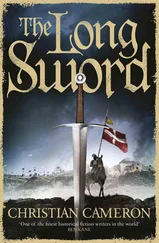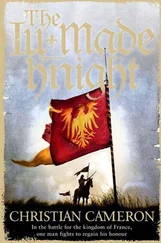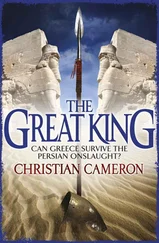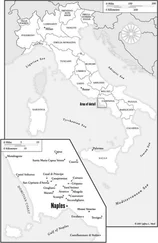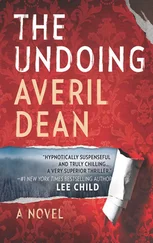The genre of biography, the Life , plays an important role in the literary sources of this period. The encomium, or panegyric, had always had elements of biography in it, and Eusebius’s Life of Constantine combined both these forms, while also owing something to the existing tradition of lives of philosophers and holy men. Later in the fourth century both Christians and pagans developed such writing further. The classic work on the Christian side was the Life of Antony , the Egyptian hermit (d. AD 356), often held to be the first example of Christian hagiography (saints’ lives) and attributed to Athanasius, bishop of Alexandria since AD 328 and a central figure in the religious controversies of the fourth century. The work exists in Syriac as well as Greek, and some uncertainty surrounds its origins. The Greek text which survives presents Antony as being above such worldly concerns as rhetorical education; this was also a stance adopted by Athanasius himself, but rejection of culture was a matter of degree – the Life does not hesitate to have Antony delivering elaborate speeches or receiving imperial letters from Constantine. Whether or not by Athanasius, the Life was quickly translated into Latin and transmitted to Christian circles in Rome by Jerome, where it became the key text in the promulgation of the ascetic lifestyle. Augustine writes in the Confessions of its role in the process of his own spiritual development (see below). The Life of Antony set a moral and literary pattern: it emphasizes ascetic renunciation (symbolized by the desert) at the expense of worldly knowledge, and presents the life of the Christian holy man in terms of the progress of the soul towards God. The saint is marked out by his holiness, and indicated to others by the miracles he can perform (in Antony’s case, taming wild animals). This literary pattern, often influenced by the secular rhetorical encomium, was followed in countless later works from the fourth century into the Middle Ages. Hagiography can and does vary greatly in the extent of its historical content, from the virtually non-existent to the heavily circumstantial; each work has to be taken on its own merits, but it was certainly the Life of Antony which provided the classic model, and it would be hard to overestimate its importance. Jerome, characteristically, tried to go one better, himself composing Latin lives of rival hermits, Hilarion and Paul, as well as the Life of Malchus , all three of them essentially literary imitations of the Life of Antony .
Two other interesting Lives may be cited, both of women. First, the Greek Life of Macrina written by her brother Gregory of Nyssa. This is also a highly literary and indeed philosophical work, drawing on Plato’s Phaedrus for its presentation of the immortality of the soul. Macrina and Gregory came from a large landowning family which also included the great figure of Basil of Caesarea. As we learn from the Life , as a woman Macrina had not received the secular education given to her brothers, but had stayed at home with her mother in Pontos, where she later established a kind of religious community at the family home. She, according to Gregory, had the true philosophy, not Basil, despite all the glittering prizes he had won at Athens. The other, very different, Life of a woman is that written about Melania the Younger (d. AD 439), who at the age of twenty persuaded her husband Pinianus, whom she had married at thirteen, to renounce their vast inherited properties in order to lead a life of asceticism and religion. The Life of Melania the Younger survives in both Latin and Greek versions, which are similar but not identical; the original may have been written in Greek c . AD 452 by Gerontius, a deacon at Melania’s monastery on the Mount of Olives in Jerusalem. As we have seen, Christian works were often immediately translated, and indeed Melania herself was fluent in both languages. The evidence of the Life is of great importance, not simply for Melania herself and her family connections with the Roman senatorial aristocracy but also as a primary document for economic history, since it provides detailed information about Melania’s estates and the sources of senatorial wealth. This is a good example of a hagiographical text which combines the ascetic theme (‘the angelic life’) with a large amount of hard historical material. Finally, both the Life of Macrina and the Life of Melania the Younger are witnesses to a feature of Christian writing which is hard to parallel in classical sources in their choice of a woman as the main subject. There was much in late antique Christianity that was deeply inimical to women, yet the fact that Christian women of good family like Macrina and Melania (and many others are known in the late fourth and early fifth centuries) became the subjects of works by male authors is something remarkable in itself.
One of the most famous literary productions of this period is Augustine’s Confessions , often regarded as the first ancient autobiography. That judgement however fails to do justice to the philosophical complexities of the work, whose thirteen books discuss such topics as memory and the nature of time; it does however contain detailed accounts of Augustine’s own life, background and intellectual development, which are of great importance for cultural history, as well as the unforgettable account of his own conversion experience in a garden at Milan (VIII.14–30). Feeling the call of God, Augustine resisted – ‘just a little longer, please’ ( Conf . VIII. 12) – until a certain Ponticianus, a baptized Christian, came to visit and told Augustine and his friend Alypius about Antony, of whom they had never then heard, and of how one of his own friends had been converted through reading the Life of Antony . After hearing this story Augustine went out into the garden and struggled with his conflicting feelings, especially his reluctance to renounce his sexuality and commit himself henceforth to a life of Christian chastity. Following a mysterious impulse, which he describes as hearing a child’s voice, he opened his text of St Paul at Rom. 13.13–14 ‘put on the Lord Jesus Christ and make no provision for the flesh in its lusts’, and at once feeling at peace in himself, he went inside and joyfully told his mother Monica what had happened. The most striking feature of the Confessions is the honesty and power of Augustine’s psychological observation of himself and of human nature in general. Augustine’s understanding of human feelings, human emotions and human sexuality pervades the Confessions , and is constantly to be found even in his most intellectual theological works. Augustine is a towering and exceptional figure; but this focus on the individual can also been seen elsewhere in the Christian literature that was now developing, and is reflected for instance in the important sets of letters written by Augustine and his contemporaries, such as Ambrose, Jerome and John Chrysostom. As for the Confessions , it is one of the great works of world literature, and one that is hard to imagine coming from the classical world.
Two Latin texts from the fourth and early fifth centuries are particularly important for the late Roman army. These are the anonymous treatise dating from the late 360s, known as the De Rebus Bellicis , and the official document setting out the military establishment of which we have an early fifth-century copy, the Notitia Dignitatum (‘List of Offices’). The first is the work of a rather original, but unknown, author, who addressed to the reigning emperors Valentinian and Valens a memorandum outlining a series of ingenious inventions by which military performance could be improved. He was clearly a pagan, and blames Constantine for extravagant public spending; he complains both that the defence of the empire is too weak and that too much money is spent on the army. The understanding of the anonymous author leaves something to be desired, both as an economic analyst and as a military commentator, but his little work comes as a breath of fresh air, and it seems a pity that we do not know whether it was even read, let alone whether it had any effect. As for the Notitia , what we have is a copy of a document, illuminated, incidentally, with interesting depictions of military insignia, that purports to set out full details of the military and civil provincial establishments. It is therefore prima facie an extremely important source. However, it must be used with great caution, for several reasons. First, the surviving text postdates the division of the empire in AD 395, and is a western document; the eastern parts seem to relate to an earlier phase than the western, so that the document as a whole contains anomalies and discrepancies. Second, and fundamentally, the Notitia sets out the situation as it was supposed to be, which is not necessarily how it actually was at any given time. Like the lawcodes, it is prescriptive, not descriptive; this makes it dangerous to take its figures on trust unless they can be corroborated by other means.
Читать дальше
